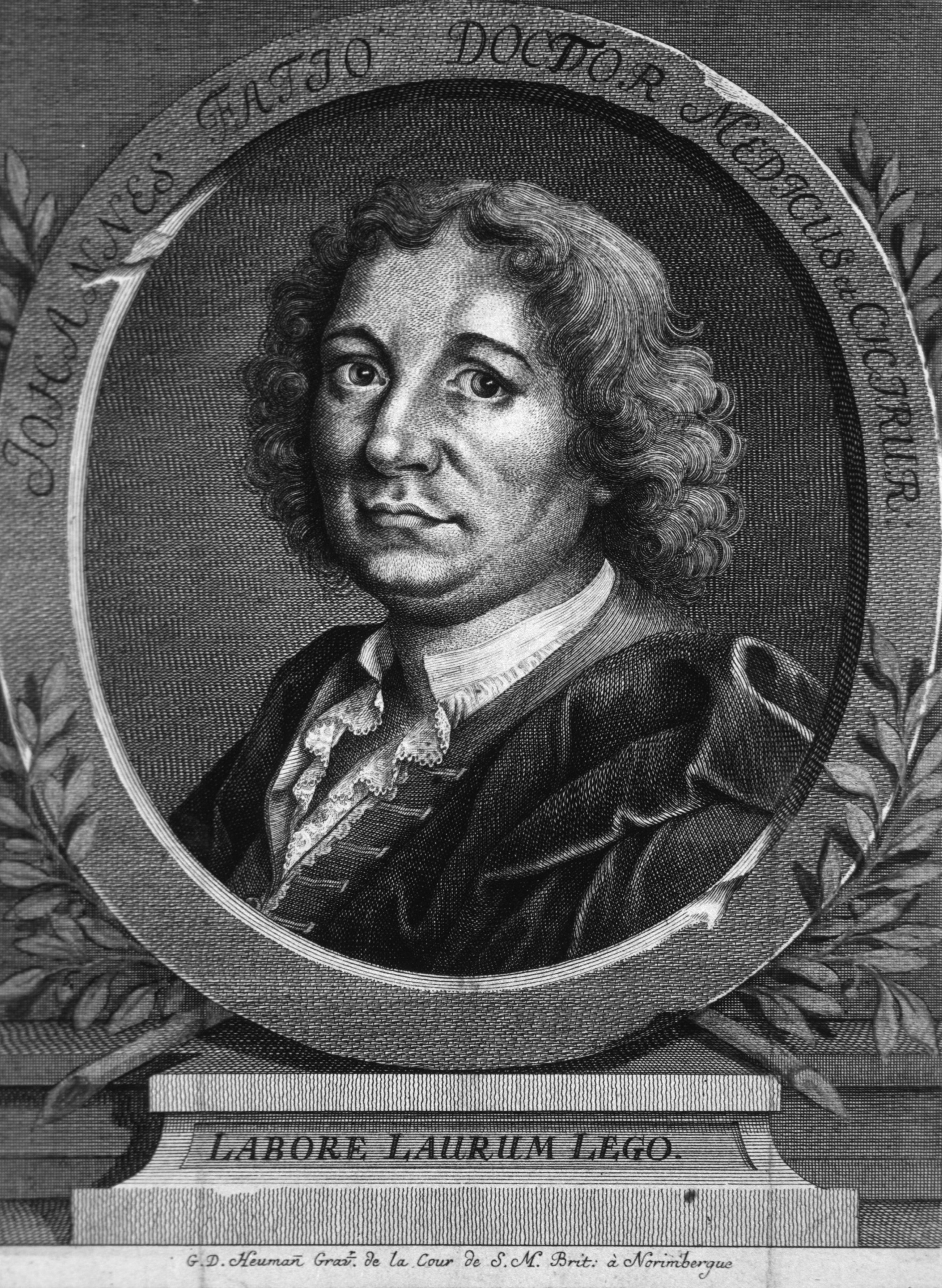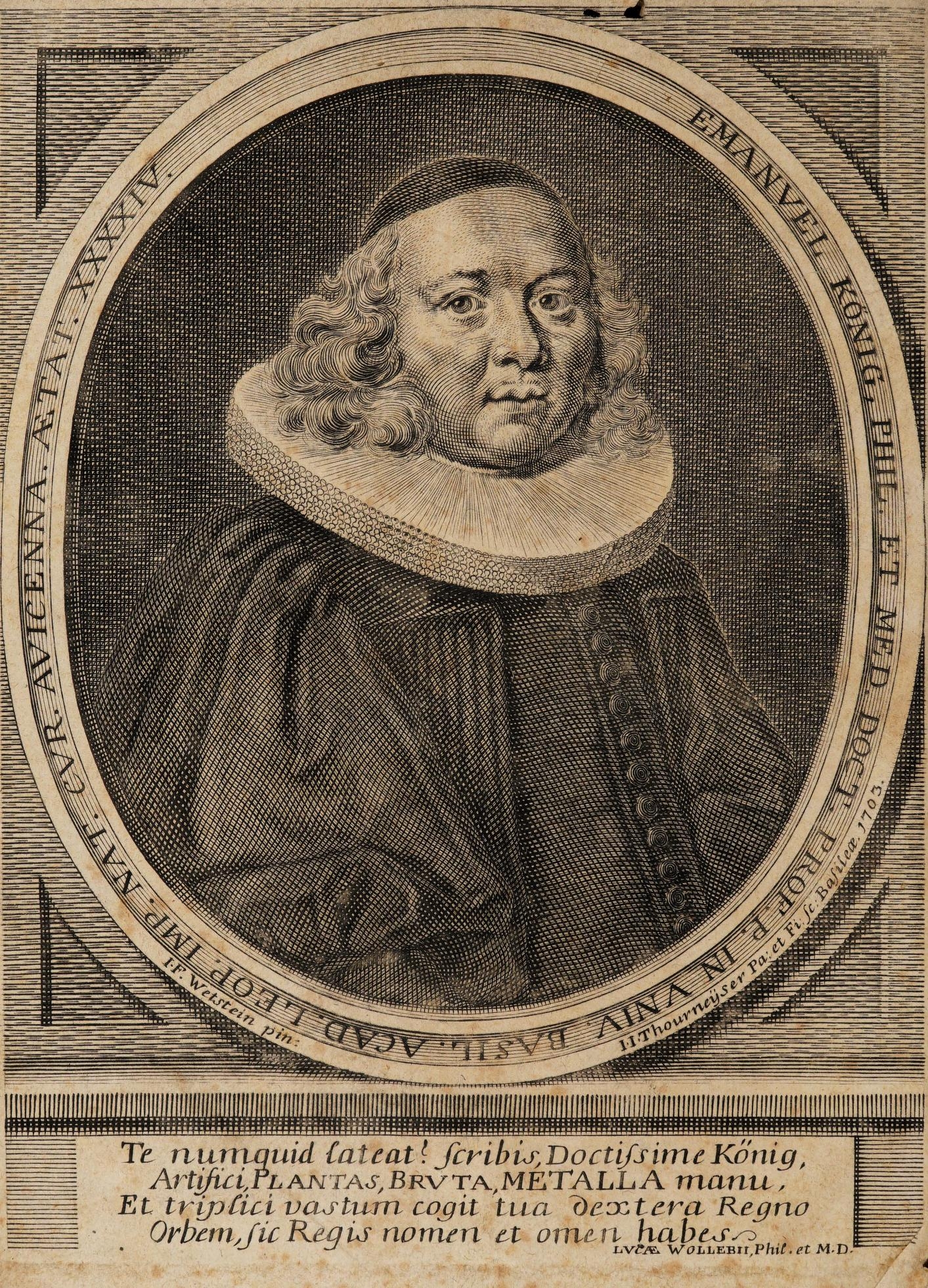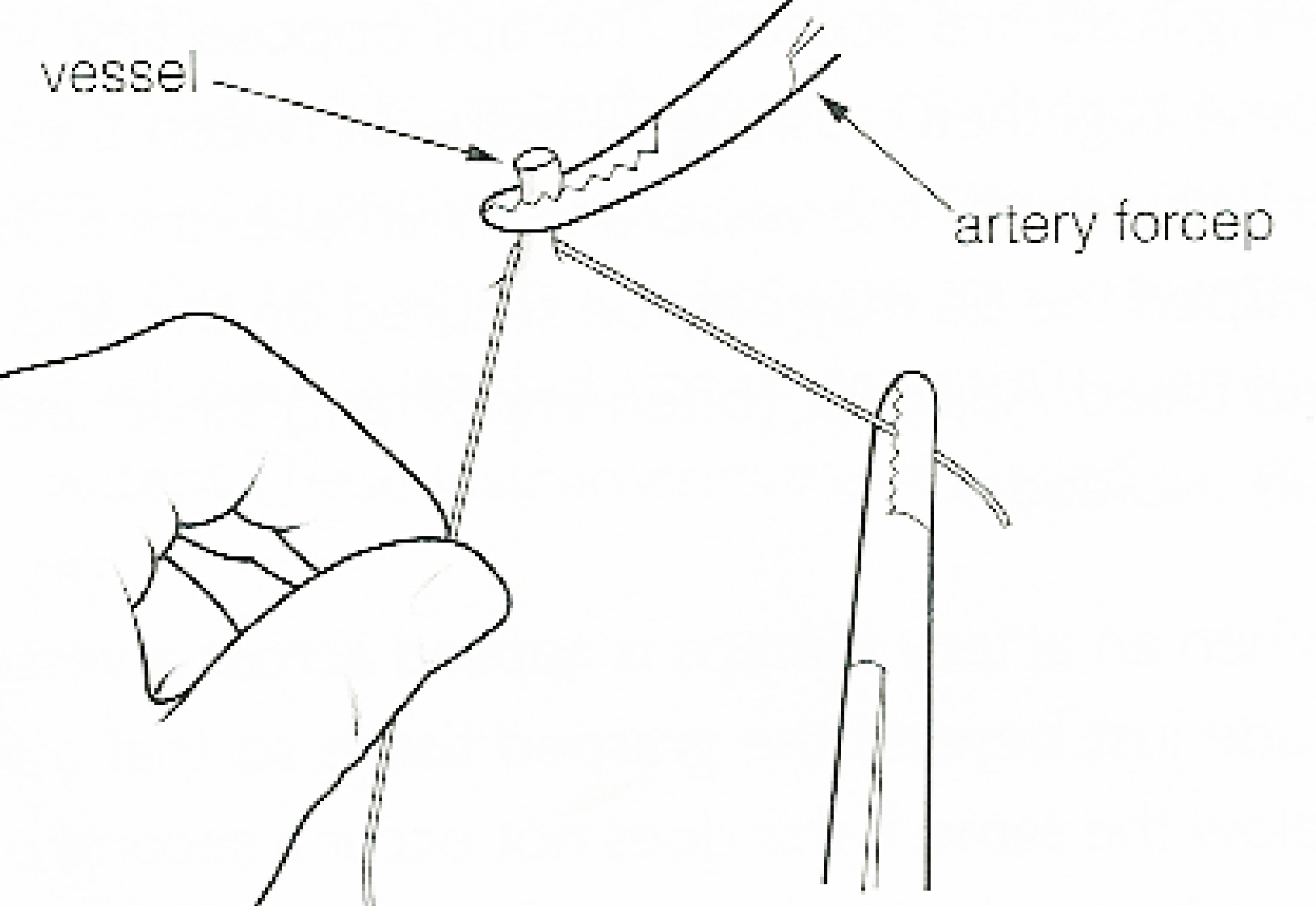|
Johannes Fatio
Johannes Fatio (14 June 1649 – 28 September 1691) was a Swiss surgeon who worked in Basel. He performed the first successful separation of conjoined twins in 1689. He was publicly executed two years later for his role in the 1691 Basel revolution. Biography Johannes Fatio was born on 14 June 1649 in Basel to Johann Anton Fatio, a merchant, and Christina Henricpetri. His father was of Italian Protestant descent and his mother came from a well known Basel family. Fatio enrolled in medicine at the University of Basel in 1662, aged 13, but never studied there. He completed an apprenticeship as a barber surgeon and was admitted to a barber surgeon's guild in 1672. Fatio befriended Johann Heinrich Glaser, a professor of medicine, with whom he performed dissections and surgical demonstrations on cadavers at the University of Basel. After Glaser's death in 1675, Fatio completed a medical degree at the French University of Valence. Upon his return to Basel in 1678, his application for r ... [...More Info...] [...Related Items...] OR: [Wikipedia] [Google] [Baidu] |
Johannes Fatio
Johannes Fatio (14 June 1649 – 28 September 1691) was a Swiss surgeon who worked in Basel. He performed the first successful separation of conjoined twins in 1689. He was publicly executed two years later for his role in the 1691 Basel revolution. Biography Johannes Fatio was born on 14 June 1649 in Basel to Johann Anton Fatio, a merchant, and Christina Henricpetri. His father was of Italian Protestant descent and his mother came from a well known Basel family. Fatio enrolled in medicine at the University of Basel in 1662, aged 13, but never studied there. He completed an apprenticeship as a barber surgeon and was admitted to a barber surgeon's guild in 1672. Fatio befriended Johann Heinrich Glaser, a professor of medicine, with whom he performed dissections and surgical demonstrations on cadavers at the University of Basel. After Glaser's death in 1675, Fatio completed a medical degree at the French University of Valence. Upon his return to Basel in 1678, his application for r ... [...More Info...] [...Related Items...] OR: [Wikipedia] [Google] [Baidu] |
Twin Research And Human Genetics
''Twin Research and Human Genetics'' is a peer-reviewed scientific journal published bimonthly by the Cambridge University Press. It is the official journal of the International Society for Twin Studies (ISTS) and the Human Genetics Society of Australasia. The journal covers research on the biology and epidemiology of twinning as well as biomedical and behavioral twin- and molecular-genetic research. According to the ''Journal Citation Reports'', it has a 2018 impact factor of 1.159. The journal was established in 1998 and has been edited Editing is the process of selecting and preparing written, photographic, visual, audible, or cinematic material used by a person or an entity to convey a message or information. The editing process can involve correction, condensation, orga ... by Robert Derom (1998–1999), and Nick Martin (2000–present). The title is a translation of ''Acta Geneticae Medicae et Gemellologiae'', from 1952 until 1978 the official organ of the Perma ... [...More Info...] [...Related Items...] OR: [Wikipedia] [Google] [Baidu] |
17th-century Swiss Physicians
The 17th century lasted from January 1, 1601 ( MDCI), to December 31, 1700 ( MDCC). It falls into the early modern period of Europe and in that continent (whose impact on the world was increasing) was characterized by the Baroque cultural movement, the latter part of the Spanish Golden Age, the Dutch Golden Age, the French ''Grand Siècle'' dominated by Louis XIV, the Scientific Revolution, the world's first public company and megacorporation known as the Dutch East India Company, and according to some historians, the General Crisis. From the mid-17th century, European politics were increasingly dominated by the Kingdom of France of Louis XIV, where royal power was solidified domestically in the civil war of the Fronde. The semi-feudal territorial French nobility was weakened and subjugated to the power of an absolute monarchy through the reinvention of the Palace of Versailles from a hunting lodge to a gilded prison, in which a greatly expanded royal court could be more easil ... [...More Info...] [...Related Items...] OR: [Wikipedia] [Google] [Baidu] |
17th-century Surgeons
The 17th century lasted from January 1, 1601 ( MDCI), to December 31, 1700 ( MDCC). It falls into the early modern period of Europe and in that continent (whose impact on the world was increasing) was characterized by the Baroque cultural movement, the latter part of the Spanish Golden Age, the Dutch Golden Age, the French ''Grand Siècle'' dominated by Louis XIV, the Scientific Revolution, the world's first public company and megacorporation known as the Dutch East India Company, and according to some historians, the General Crisis. From the mid-17th century, European politics were increasingly dominated by the Kingdom of France of Louis XIV, where royal power was solidified domestically in the civil war of the Fronde. The semi-feudal territorial French nobility was weakened and subjugated to the power of an absolute monarchy through the reinvention of the Palace of Versailles from a hunting lodge to a gilded prison, in which a greatly expanded royal court could be more easil ... [...More Info...] [...Related Items...] OR: [Wikipedia] [Google] [Baidu] |
1691 Deaths
Events January–March * January 6 – King William III of England, who rules Scotland and Ireland as well as being the Stadtholder of the Dutch Republic, departs from Margate to tend to the affairs of the Netherlands. * January 14 – A fleet of ships carrying 827 Spanish Navy sailors and marines arrives at Manzanillo Bay on the island of Hispaniola in what is now the Dominican Republic and joins 700 Spanish cavalry, then proceeds westward to invade the French side of the island in what is now Haiti. * January 15 – King Louis XIV of France issues an order specifically prohibiting play of games of chance, specifically naming basset and similar games, on penalty of 1,000 livres for the first offence. * January 23 – Spanish colonial administrator Domingo Terán de los Ríos, most recently the governor of Sonora y Sinaloa on the east side of the Gulf of California, is assigned by the Viceroy of New Spain to administer a new province that governs lands on both sides of the ... [...More Info...] [...Related Items...] OR: [Wikipedia] [Google] [Baidu] |
1649 Births
Events January–March * January 4 – In England, the Rump Parliament passes an ordinance to set up a High Court of Justice, to try Charles I for high treason. * January 17 – The Second Ormonde Peace concludes an alliance between the Irish Royalists and the Irish Confederates during the War of the Three Kingdoms. Later in the year the alliance is decisively defeated during the Cromwellian conquest of Ireland. * January 20 – Charles I of England goes on trial, for treason and other "high crimes". * January 27 – King Charles I of England, Scotland and Ireland is found guilty of high treason in a public session. He is beheaded three days later, outside the Banquet Hall in the Palace of Whitehall, London. * January 29 – Serfdom in Russia begins legally as the Sobornoye Ulozheniye (, "Code of Law") is signed by members of the Zemsky Sobor, the parliament of the estates of the realm in the Tsardom of Russia. Slaves and free peasants are con ... [...More Info...] [...Related Items...] OR: [Wikipedia] [Google] [Baidu] |
Midwives
A midwife is a health professional who cares for mothers and newborns around childbirth, a specialization known as midwifery. The education and training for a midwife concentrates extensively on the care of women throughout their lifespan; concentrating on being experts in what is normal and identifying conditions that need further evaluation. In most countries, midwives are recognized as skilled healthcare providers. Midwives are trained to recognize variations from the normal progress of labor and understand how to deal with deviations from normal. They may intervene in high risk situations such as breech births, twin births, and births where the baby is in a posterior position, using non-invasive techniques. For complications related to pregnancy and birth that are beyond the midwife's scope of practice, including surgical and instrumental deliveries, they refer their patients to physicians or surgeons. In many parts of the world, these professions work in tandem to provide ... [...More Info...] [...Related Items...] OR: [Wikipedia] [Google] [Baidu] |
Emanuel König
Emanuel König Latinized as Emanuelis König (1 November 1658 – 30 July 1731) was a Swiss physician and naturalist. He became a professor of medicine at the University of Basel and is best known for his three books ''Regnum animale'' (1682), ''Regnum minerals'' (1686), and ''Regnum vegetabile'' (1688). He adopted a Cartesian principle, explaining animal physiology along mechanistic foundations. König was born in Basel where his father was a bookseller. He studied at the University of Basel, receiving a medical degree in 1682. He became a member of the Leopoldina Academy through the efforts of George Wolfgang Wedel of Jena and published many papers. He travelled in Italy and France and returned to become a professor of Greek at Basel in 1695 and a professor of medicine in 1711. He began to examine older texts and compiled his own works on the use of plants, animals and minerals in medical therapy. He was critical of existing theories and countered the contemporary belief that pla ... [...More Info...] [...Related Items...] OR: [Wikipedia] [Google] [Baidu] |
Ligature (medicine)
In surgery or medical procedure, a ligature consists of a piece of thread ( suture) tied around an anatomical structure, usually a blood vessel or another hollow structure (e.g. urethra) to shut it off. History The principle of ligation is attributed to Hippocrates and Galen. In ancient Rome, ligatures were used to treat hemorrhoids. The concept of a ligature was reintroduced some 1,500 years later by Ambroise Paré, and finally it found its modern use in 1870–80, made popular by Jules-Émile Péan. Procedure With a blood vessel the surgeon will clamp the vessel perpendicular to the axis of the artery or vein with a hemostat, then secure it by ligating it; i.e. using a piece of suture around it before dividing the structure and releasing the hemostat. It is different from a tourniquet in that the tourniquet will not be secured by knots and it can therefore be released/tightened at will. Ligature is one of the remedies to treat skin tag, or acrochorda. It is done by tying str ... [...More Info...] [...Related Items...] OR: [Wikipedia] [Google] [Baidu] |
Xiphoid Process
The xiphoid process , or xiphisternum or metasternum, is a small cartilaginous process (extension) of the inferior (lower) part of the sternum, which is usually ossified in the adult human. It may also be referred to as the ensiform process. Both the Greek-derived ''xiphoid'' and its Latin equivalent ''ensiform'' mean 'swordlike' or 'sword-shaped' Structure The xiphoid process is considered to be at the level of the 9th thoracic vertebra and the T7 dermatome. Development In newborns and young (especially small) infants, the tip of the xiphoid process may be both seen and felt as a lump just below the sternal notch. At 15 to 29 years old, the xiphoid usually fuses to the body of the sternum with a fibrous joint. Unlike the synovial articulation of major joints, this is non-movable. Ossification of the xiphoid process occurs around age 40. Variation The xiphoid process can be naturally bifurcated or sometimes perforated (xiphoidal foramen). These variances in morphology are inher ... [...More Info...] [...Related Items...] OR: [Wikipedia] [Google] [Baidu] |
Theodor Zwinger III
Theodor Zwinger III (26 August 1658 – 22 April 1724) was a Swiss physician. Life Theodor Zwinger came from an important Basel family of scholars. His father was the Basel theology professor Johannes Zwinger. He studied in Basel from 1675 and in 1680 was made a medical doctor with the dissertation ''De paedotrophia''. He then spent two years in France, including in Paris and Strasbourg. After his return to Basel, he pursued a career as a university lecturer at the University of Basel. First he took over the professorship of rhetoric in 1684, three years later the chair of physics, in 1703 that of anatomy and botany, and in 1711 the chair of theoretical and practical medicine which he retained until his death. He also worked as Stadtarzt (town doctor), was dean several times and in 1711/1712 rector. In 1685 Zwinger was elected a member of the German National Academy of Sciences Leopoldina. In 1706 he became a member of the Prussian Academy of Sciences. In 1700 Zwinger wa ... [...More Info...] [...Related Items...] OR: [Wikipedia] [Google] [Baidu] |
Nikolaus Eglinger
Nikolaus Eglinger (1645–1711) was a Swiss physician, based in Basel. Eglinger studied medicine at the University of Basel under Emmanuel Stupanus and Johann Bauhin. He produced a dissertation in 1661. In 1690, Johann Bernoulli Johann Bernoulli (also known as Jean or John; – 1 January 1748) was a Swiss mathematician and was one of the many prominent mathematicians in the Bernoulli family. He is known for his contributions to infinitesimal calculus and educating Le ... produced his dissertation under the supervision of Eglinger. References External links * 1645 births 1711 deaths Physicians from Basel-Stadt University of Basel alumni Academic staff of the University of Basel 17th-century Swiss physicians 18th-century Swiss physicians {{Switzerland-bio-stub ... [...More Info...] [...Related Items...] OR: [Wikipedia] [Google] [Baidu] |








